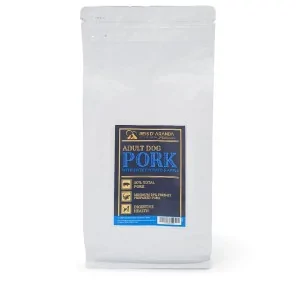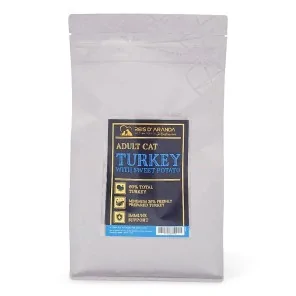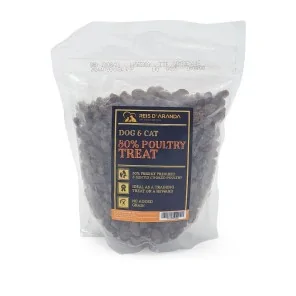The Tornjak originated from genetically homogeneous, almost extinct, indigenous shepherd dogs. These dogs have...
OBESITY IN DOGS AND CATS
INTRODUCTION
Obesity in companion animals is one of the most common nutrition-related diseases and is defined as the breakdown of the balance between body mass and fat tissue to an increase of 20-25% of ideal body weight. Currently almost half of all dogs are obese or overweight and cats are on the same path.
OBESITY: ONE OF THE MAJOR MODERN DISEASES.
Identifying obesity in companion animals is somewhat complicated due to the wide variety of body builds that exist between different types of dogs, breed, bone conformation, height, coat length, etc. The simplest way to identify obesity is based on the body condition index, which is based on the observation of specific areas of the animal, which tend to accumulate fat, and which can be examined by observation and palpation, such as the rib area, waist and abdomen.
Symptoms observed in overweight animals are as follows:
- Ribs cannot be easily palpated (ribs should be palpable to the touch without being sharp)
- Obvious loss of waistline
- Need for loosening of collar or harness
- Slow movements and difficulty in walking
- Intolerance to exercise that progressively sets in (it seems that the dog is now lazy).
- Accumulation of fat in the upper tail area
- Sinking of the back and side of the body (the dog looks deformed)
- Breathing difficulty and poor oxygenation evident (bruised lips, gums and tongue).
Obesity is generally caused by an excessive calorie intake accompanied by low energy consumption, but its presence is also associated with various risk factors such as certain pathologies that require medical intervention, thyroid problems, castrated animals, sedentary owners or genetic predisposition, as in the case of the common European cat, the Labrador retriever, the beagle, the English cocker or the Yorkshire terrier.
In the case of dogs such as the podenco ibicenco or the lebreles (family of greyhounds, among which we find the Spanish greyhound, the Italian greyhound, the saluki, the azawakh, the borzoi, the Irish wolfhound or the Afghan greyhound) the physical appearance of a dog at its ideal weight is different, as they are much more slender, fibrous animals and in which the bones of the hips or thighs must be very well defined; in the case of the Spanish Greyhound and the Ibizan Hound, it is essential that the last two ribs are clearly visible (it is quite common for dogs of these two breeds that are not intended for hunting or show, i.e. that live on the couch, to be overweight).
CONSEQUENCES OF OBESITY IN DOGS AND CATS
Obese animals are at an increased risk of suffering from various diseases such as diabetes mellitus, hypertension, cardiovascular and respiratory disorders, increased surgical risk (poor assimilation of anaesthesia, difficulties in accessing the surgical site due to excess fat, more complex recovery from anaesthesia, etc.), inflammatory states, inflammatory states, and increased risk of heart and respiratory problems. ...), chronic inflammatory conditions, osteoarthrosis and neoplasms, as well as reduced resistance to infections or increased risk of developing neurological problems, all of which reduce their life expectancy and make their day-to-day life much more difficult (even miserable). It is therefore very important that owners learn to identify the problem early and, once the problem is identified, take steps to tackle it or keep it at bay.
HOW TO PREVENT OBESITY IN DOGS AND CATS?
Prevention is the key to avoiding the problems associated with obesity in pets. Here are some strategies:
- A BALANCED, QUALITY FOOD: Always choose your pet's food based on its age, breed, activity level and state of health. Avoid low-quality feeds whose main ingredient is cereals or which contain a large amount of by-products.
- CONTROL TREAT TREATS: Treats should be a small part of your pet's diet and choose low-calorie options with the most natural composition possible, such as Reis d'Aranda snacks or the biscuits and treats that can be found in the confectionery section of the same brand.
- EXERCISE: Provide regular opportunities for play and physical activity, this includes cats that can be encouraged to move more with interactive toys.
- VET FOLLOW-UP: Get your pet regular check-ups at the vet.
CONCLUSION
Obesity in pets is a serious but ultimately manageable health problem with the right approach, its prevention and the treatment of obesity are not only acts of care, but also of deep love for our furry companions, as keeping a sick (obese) animal untreated, ignoring warnings or promoting such a condition (believing it is an act of love or that it looks "cute") falls under what is known as "domestic neglect".
Leave a comment
Log in to post comments
















